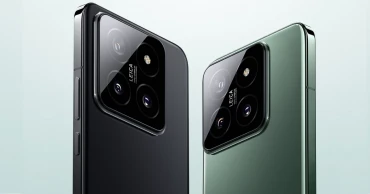Xiaomi 14 Pro
Xiaomi 14 Pro Review: What’s special about it?
Ever since its inception, Chinese consumer electronics manufacturer Xiaomi is leading almost every price segment in the smartphone industry. ‘Pro’ lineup represents Xiaomi’s top-tier products that money can afford. Xiaomi launched the 14 Pro on 1st November 2023 for China and subsequently for the global market. As Xiaomi’s premium flagship smartphone for the year, the 14 Pro brings several cutting-edge features. Let’s have a detailed look at the key specs, pros, cons and price of Xiaomi 14 Pro.
Key Specifications of Xiaomi 14 Pro
Design and Build Quality
Xiaomi’s design philosophy has been fairly consistent for their Pro series. The design of the 14 Pro can be best described as an incremental update to last year’s 13 Pro. Users will be getting a glass front and back device with an aluminum frame. There’s a premium variant with a titanium frame as well this time around. The glass back has a matte finish which does an incredible job of deterring fingerprints and smudges.
There is a noticeable curve all around on the front like the 3D glass designs we’ve seen on many Xiaomi devices. The actual screen real estate doesn’t curve, rather it’s the glass design that curves onto the frame. It's what Xiaomi is calling a “full equal depth micro-curved screen” (translated from simplified Chinese). The front glass is protected by Xiaomi Longjing Glass.
The 14 Pro has a 161.4 mm by 75.3 mm by 8.5 mm dimension with 223 g weight for the standard option. The titanium variant comes in at 230 g. As expected, the 14 Pro also has IP68 dust/water resistance (up to 1.5m for 30 minutes). The choice of ports and buttons remains the same as the 13 Pro on the 14 Pro. The compact form factor combined with a stealth minimal design really makes the 14 Pro stand out of the lot.
Read more: Xiaomi Mix Fold 3 Review: Flagship Phone with Slim Foldable Design
The Display
The display on the Xiaomi 14 Pro is all about pushing the limit of display technology. The 6.73-inch LTPO AMOLED panel has 68B colors, a 120Hz refresh rate, Dolby Vision, and HDR10+ support. While these might sound like standard flagship features, Xiaomi has added an astounding 3000 nits of peak brightness on the panel. This is the first time a mobile device has reached such a level. It has been made possible thanks to Huaxing Optoelectronics' customized C8 light-emitting material. Naturally, the outdoor experience of the display with auto brightness has been excellent, to say the least.
The panel has a QHD+ resolution with 1440 by 3200 pixels and 522 ppi density. With an all-around symmetrical design, the screen-to-body ratio on the 14 Pro stands at 89.6%. Additional specs at the default settings include 98.6% sRGB, 70.2% Adobe RGB, and 73.1% DCI-P3 color gamut.
The usage experience on the 14 Pro has been no less than flagship grade. The LTPO tech helps to conserve battery with 1 to 120 hz refresh variability. Scrolling through apps and UI has been smooth with good viewing angles all around. Overall, it’s an impressive display with no apparent drawbacks as of yet.
The Camera
The triple camera module on the 14 Pro has a 50 MP, f/1.4-f/4.0, 23mm wide angle shooter with dual PDAF, laser AF, and OIS. The second sensor is a 50 MP, f/2.0, 75mm telephoto lens with PDAF and OIS. And lastly, there is a 50 MP, f/2.2, 14mm, 115˚ ultrawide sensor with AF.
Read more: vivo V29e 5G Review: Is this mid-range phone rightly priced?
The main sensor is a custom-built sensor which Xiaomi calls the “Lighthunter 900” (translated from simplified Chinese). The pictures from the main sensor came out well with detailed sharpness on the subject and accurate background blur. The dynamic range was easily on par with the iPhone 14 Pro. There is a distinct warm pop of colors in each image which naturally enhances the picture quality. The portrait mode also showed accurate edge detection and realistic blur.
The camera performance intensifies in low light conditions. The variable aperture on the main sensor allows you to take some great shots even without the night mode. Pictures had decent exposure and accurate details with grains seen only in extremely dark conditions.
The telephoto with its 3.2x optical zoom and the ultrawide also performed on par with the main sensor.
There’s also a 32 MP front-facing camera good enough for selfies and vlogging as it supports 4K at 30 fps now.
Read more: Top 10 Smartphones Coming to Bangladesh in November 2023
2 years ago

